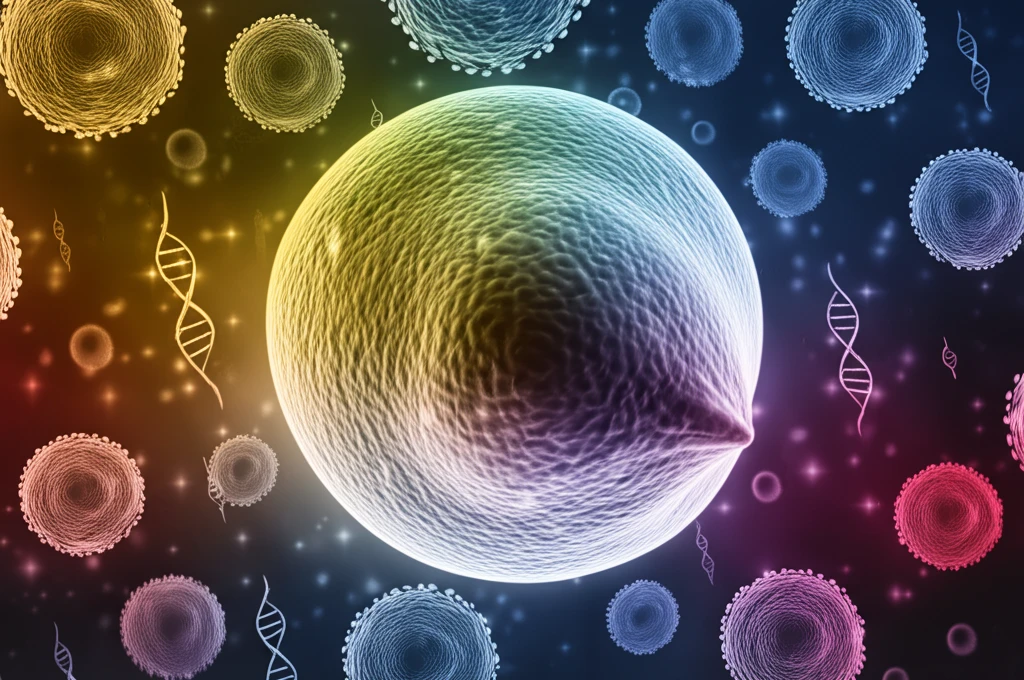
Decoding Breast Cancer: How Immune Signatures in Fine Needle Aspirates Could Revolutionize Treatment
"New research reveals subtype-associated immune signatures and chemokine involvement in breast cancer, offering hope for personalized immunotherapy approaches."
The fight against breast cancer is constantly evolving, with researchers seeking more precise and less invasive methods to understand and treat this complex disease. Traditional approaches rely on established biomarkers, but there's a growing need for tools that capture the dynamic interplay between the tumor and its surrounding environment. This includes the immune system, which plays a critical role in cancer progression and response to therapy.
Fine needle aspiration (FNA) biopsy has emerged as a valuable technique, providing direct access to tumor tissue with minimal invasiveness. However, the small sample size requires highly sensitive and sophisticated analytical methods. Recent advancements in proximity extension assays (PEA) are enabling scientists to analyze a wide range of proteins in FNA samples, revealing previously hidden insights into the tumor microenvironment.
A groundbreaking study has harnessed PEA technology to profile immune signatures in FNA samples from breast cancer patients, uncovering distinct patterns associated with different cancer subtypes and the involvement of chemokines, key signaling molecules that orchestrate immune cell activity. This research offers a promising new avenue for personalized immunotherapy strategies, tailored to the unique immune landscape of each patient's tumor.
Unlocking the Secrets: What Did the Researchers Discover?

The researchers analyzed 167 proteins in FNA samples from 25 breast cancer patients and 32 individuals with benign lesions, using proximity extension assays (PEA). This high-throughput technique allowed them to identify distinct protein profiles associated with different breast cancer subtypes. The key findings include:
- Distinct Protein Signatures: Several proteins showed different expression levels between cancerous and benign lesions, including CA9, GZMB, IL6, VEGFA, CXCL11, PDL1, and PCD1.
- Chemokine Correlation: Several chemokines correlated with ER and Ki67 status, such as CCL4, CCL8, CCL20, CXCL8, CXCL9, and CXCL17. These signaling molecules play a crucial role in attracting immune cells to the tumor microenvironment.
- Predictive Signatures: Three protein signatures were identified that could predict Ki67 status, ER status, and tumor grade. These signatures were dominated by chemokines, highlighting their importance in breast cancer biology.
- CCL13 Involvement: Expression profiles of CCL13 in benign lesions and breast cancer were described for the first time, showing a correlation with proliferation. This suggests a potential role for CCL13 in advanced breast cancer.
What's Next? The Future of Personalized Breast Cancer Treatment
This pilot study provides a compelling rationale for further investigation into the role of immune signatures in breast cancer. By using minimally traumatic sampling techniques like FNA and advanced proteomic analysis, scientists can gain a deeper understanding of the tumor microenvironment and identify potential targets for personalized immunotherapy. This approach could lead to more effective treatment strategies, tailored to the individual immune landscape of each patient's tumor, ultimately improving outcomes for those affected by breast cancer.
